In the process of carrying out labor activity, such a concept as the rate of production arises. It is not applicable to all sectors of the economy, but it is a very important indicator in calculating the wages of an employee. Most often used exclusively for manufacturing enterprises. About where and how the production rate is used, we will go further. 
Theoretical concepts
Rationing of labor is necessary in any case. How to assign a wage to an employee? Based on what data and indicators? This was the first time that John Keynes thought about this at the dawn of economic theory. Nowadays, regulation is carried out in any industry, and recommendations for this are indicated in regulatory documents.
In fact, the rate of production determines how many units of output one person must do in the allotted time. The parameter is calculated in physical terms: ton, pieces, kilograms, meters and so on. Despite the fact that there is a unified approach to the formation of production standards, for each sector of the economy it is completely different. At the state level, only practical recommendations are given, but specific indicators are set directly at the enterprise and are regulated by a collective agreement.
Next, we will consider how to calculate the production rate using the example of a specific industry. 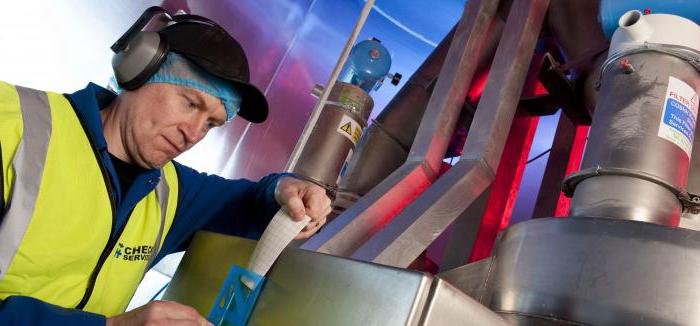
The procedure for developing production standards for the food industry
At catering establishments, it is customary to assume that the work of any cook is estimated in the number of dishes prepared. This approach helps to objectively assess what costs of time, resources and labor were necessary to create a particular product. The normative documents for the food industry have developed special labor intensity factors, without which it is impossible to calculate the production rate. 
The labor intensity factor of the food industry
The labor intensity coefficient shows how much time is needed to prepare one dish in relation to the dish taken as the labor intensity unit. In other words, there is a single parameter accepted as a unit, and all others are equated with it.
For example, the simplest chicken soup in the amount of one portion is prepared for 100 s. This is a unit. Milk soup will take 90 s, in which case the labor-intensive ratio will be 0.9. Timing helps to establish such a framework. But in order for catering enterprises not to spend their time studying standards, all of them were done by public services, and now all the norms and labor-intensive factors for the food industry can be found in regulatory documents.
Formula for production standards for the food industry
The production rate (formula) is approximately the same for all sectors of the economy. For its calculation, indicators of the duration of the work shift, the time spent on manufacturing a unit of production, time for preparation, rest and so on are used. We give an example for the food industry. The formula is shown in the figure: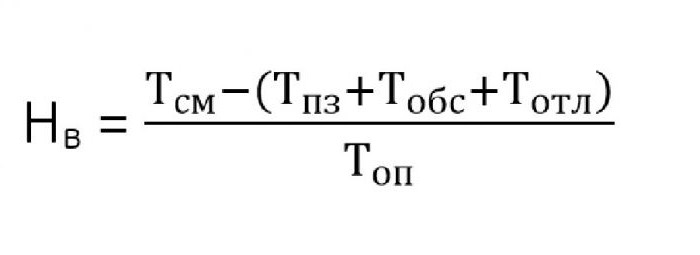
The necessary parameters are:
Nat - production rate;
Tcm - the duration of one shift, min;
Tpz - time for the preparatory phase, min;
Tobs - time required for servicing the workplace, min;
Tex - time spent on personal needs, min;
Top - calculated time per unit of production, min.
In general, it does not matter in which dimension the calculations are made. You can use minutes, seconds or hours.
Example
Given the initial parameters:
In total, one chef spends 25,220 s on the production of cottage cheese cake. The preparatory time takes 1260 s, the preparation of the workplace and the necessary materials cost 1008 s. In breaks for rest and personal needs, it takes 1260 s. According to the timing indicated in the regulatory documents, 32.39 s should be spent on the production of one unit of cottage cheese cake. Find the rate of production.
Substitute the data in our formula and get the result:
Nat = (25220 - (1260 + 1008 + 1260)) / 32.39 = 671 pcs.
Thus, one chef in one shift is able to produce 671 units of cottage cheese cake. The results obtained are an estimate of labor productivity and are the main data for calculating wages.
Production rates for non-production room cleaners
Consider another example. Cleaning of production facilities is carried out approximately according to the same plan, therefore, data from a real-life enterprise, say, the beer and soft drinks industry, are taken as a basis.
The calculation of the production rate is made taking into account the following points:
- basic operations: washing and sweeping floors, washing and wiping walls, windows, doors;
- premises for cleaning: technological workshops and auxiliary sites;
- characteristics of cleaning objects: material of manufacture, laboriousness during work;
- for an optimal working time, an 8-hour shift is taken.
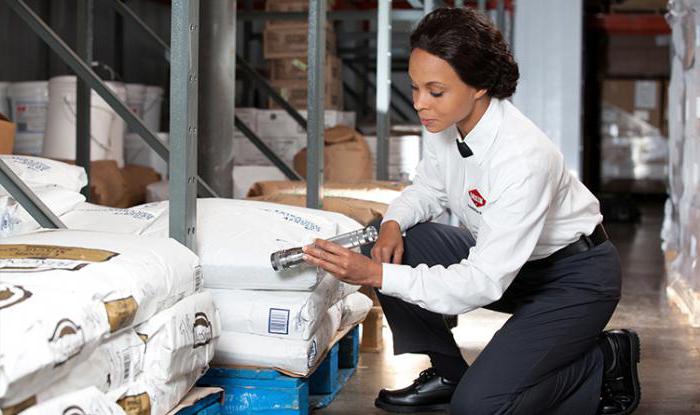
Calculation formula for cleaning industrial premises
Directly at the enterprise, its own time measurements are carried out when calculating the norms working out. it made in order to most accurately understand how many minutes or hours it takes to wipe the windows, for example, the size of 1 by 1 m or 2 by 3 m. In the same way and floors. Tile coating without chips and cracks is removed much faster than its concrete counterpart. Consider how the production rate (formula) is calculated for industrial premises: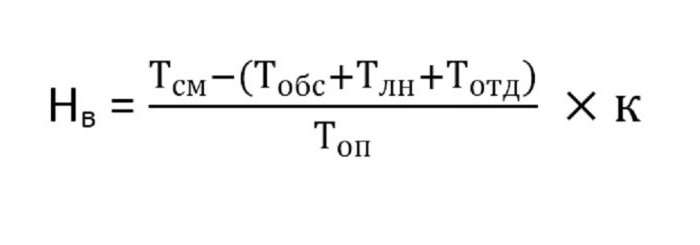
You need to know the following parameters:
Nat - production rate;
Tcm - the duration of one shift, min;
Tobs - the time required to service the workplace during the shift, min;
Tdepart - time spent on rest, min;
Tln - time for a break according to personal needs, min;
Top - calculated time for cleaning 1 sq. km. m area, sec;
to is the coefficient that is taken into account when cleaning several rooms. It shows how much time a worker spends when moving from one room to another. Actually set by a stopwatch.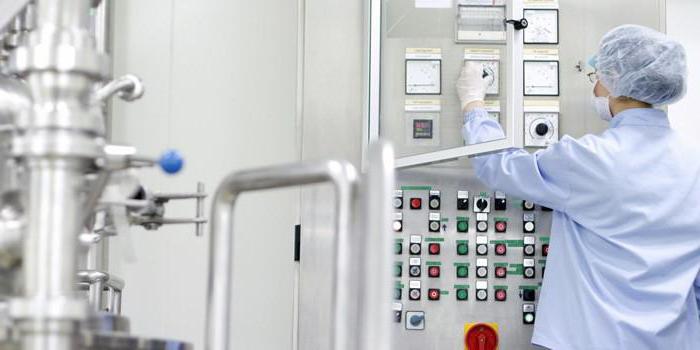
General requirements for production workshops before harvesting
The above indicated production norms will make sense if a number of requirements for production facilities are met. As we understand it, in a workshop where work is in full swing all day, everything should be put in order by the end of the shift. This time is taken into account by the worker standing behind the machine, and not the cleaning lady. So, here are the general requirements for production facilities:
- at the entrance there must be special floor grilles or rugs that collect dirt from the street;
- floors must be repaired in a timely manner when cracks and potholes appear;
- All transport trolleys must have rubber wheels that do not spoil the floor;
- the walls must be made in accordance with the standards adopted by public services (painted or covered with light tiles);
- garbage and broken containers must be cleaned by the employee in appropriate containers;
- special attention is paid to the norms of the distance between the equipment;
- all employees must keep track of their workplace and keep it clean.
Conclusion
Determining production rates is key to enterprises today. Many experts believe that clearly defined quantitative boundaries infringe on workers, preventing them from expressing themselves and increasing their productivity. But at the same time, labor standards will not be canceled soon, because this is the only way to regulate wages.
Another issue is that standards should be regularly reviewed to reflect new conditions or more productive equipment. Another nonsense today in the realities of production structures - most of the time standards are set according to samples. The workshop may have more difficult conditions, which will entail a great waste of time, which means failure to comply with the standards. Consideration of all factors in measuring timekeeping is a fundamentally important task for calculating production rates.








